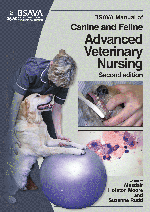
Full text loading...

Over recent years there has been an increase in the recognition of the value of clinical pathology to veterinary practice. Most cases that require more than superficial first aid will now undergo some laboratory evaluation. This approach to case management encourages therapeutic intervention that is both prompt and appropriate for the animal, and usually improves the outcome of cases. This in turn provides an increase in satisfaction for both the clients and the practice team. This chapter provides an introduction to the key features of laboratory practice. It comprises three distinct sections. Firstly it considers when and how to use an external commercial laboratory and also what features to look for when choosing a laboratory. Secondly, it reviews how to successfully set up a laboratory in the clinic and how to go about managing it for best practice. Finally, it focuses on the key laboratory techniques of microscopy, notably urinalysism haematology and cytology. Cumulatively these sections provide a background to the essential concepts within clinical pathology, a practical guide to laboratory management and an overview of the essentials of microscopy.
Clinical pathology in practice, Page 1 of 1
< Previous page | Next page > /docserver/preview/fulltext/10.22233/9781905319725/9781905319725.12-1.gif

Full text loading...

















